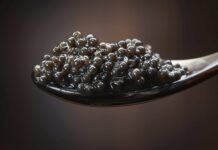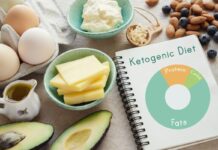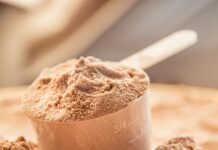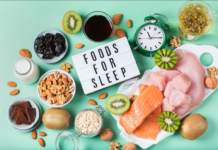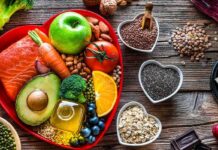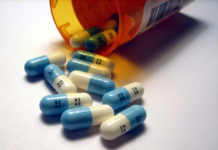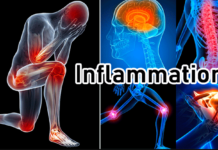For instance, a person is around 80 kilograms. This means 64 percent, is water, but you can’t tell by looking. After water, protein makes up about 16 percent of that person’s body, not just the muscles but also in things like the tiny pumps in my neurons and hemoglobin in my blood. Around 16% of that person is fat 4% is minerals, such as calcium and phosphorus in the bones, and iron in the blood. 1% is carbohydrates, the majority of which are either being eaten as that person interacts with you or waiting around as glycogen waiting to be used. This was just a brief introduction of how metabolism and nutrition work together.
What is Metabolism?
So, how exactly do our bodies turn what we consume into raw materials and energy? The response is a never-ending chain of reactions devoted to two critical and completely contradictory tasks:
- One chemical reaction annihilates the reactants fed to it, reducing significant, complex substances to molecular rubble.
- The other reassembles the debris into new and more oversized items, placed together again to distribute.

So our bodies are constantly reinventing themselves, still in a state of loss but also always recovering. Even if all of this occurs at the cellular level, the effects may not be serious. These two reactions are where everything we’ve learned so far about the digestive, endocrine, circulatory, and respiratory systems starts to come together. Together, these processes make up your metabolism. Now the sciencey word metabolism has a meaning in popular speech, but metabolism isn’t just one thing.
People use the term metabolism to refer to how quickly your body burns the fuel in your diet or increases your energy level. That’s perfect for personal trainers and wellness magazines to carry.
Physiologically, metabolism refers to the biochemical response that occurs in the body. More specifically, it reconciles two opposing chemical processes that are still going on inside of you at the same time.
Anabolism is one of these chemical powers. Anabolic reactions both build and absorb energy. These are the processes that take the small monomer essential components in your diet and convert them into larger monomer building blocks like monosaccharides and fatty and amino acids. Constructing them into larger, more complex polymers such as carbohydrates, fats, and proteins are used throughout your cells. When you need new building blocks or release steam, specific polymers in your body or new ones in your diet are broken down by catabolic reactions.
Nutrients:
Meanwhile, nutrients are the compounds that the body is constantly breaking down and repairing to see them broken down again. These nutrients, which your body requires to create, sustain, and restore itself, are classified into six major categories:
Water:
makes up a large proportion of what we drink and what makes up our bodies. It is perhaps the most critical nutrient.
Vitamins:
which are molecules that can be fat-soluble or water-soluble. They aren’t used as building blocks or for energy, but they are critical in assisting the body in using those nutrients. Vitamin C, for example, aids iron absorption, while vitamin K is vital for blood clotting, and vitamin B aid in the production of ATP from glucose.
Minerals:
Calcium, magnesium, and phosphorus harden bones and teeth, while the iron is essential for hemoglobin formation. Furthermore, potassium, sodium, and chlorine aid in maintaining the body’s pH equilibrium and are used in action potentials. As a result, water, vitamins, and minerals are all needed.
Fats:
Many of your bodily functions, including vitamin and mineral absorption, blood clotting, cell building, and muscle movement, are supported by fat.
Carbohydrates:
Carbohydrates provide energy to your body, particularly your central nervous system and brain, and protect against disease.
Protein:
Serves as a building block for the body and is found in every cell, from bone to skin to hair.

Carbohydrates, lipids, and proteins are the three main components that everybody often asks about, which can be seen on product packages ranging from oatmeal to Pop-Tarts. Except for lactose in milk, most of the carbohydrates you’ve ever consumed originated in plants. Fruits, honey, sugar beets, and sugar cane have mono and disaccharides, while vegetables provide polysaccharide starches.
The important thing to understand is that the monosaccharide glucose is the ultimate molecular fuel used by your cells to produce ATP. ATP is the enzyme that the cells use to accelerate anabolic reactions when they need to build new polymers or perform other tasks, such as running a sodium-potassium pump or disconnecting the head of a myosin filament to contract muscles.
Any of the cells will now obtain nutrition from fats. However, many essential ones, such as the neurons and red blood cells, feed on glucose. As a result, the majority of carbohydrates absorbed by your intestines are converted to glucose. If the energy isn’t required right away, it can be processed as glycogen in your liver and muscles, or it can be converted to glycerol and fatty acids to form triglyceride fats. In what seems to be a propaganda war on dietary fats, we need them. Of course, the fats in your adipose tissue store energy, but they also store fat-soluble vitamins and cushion your organs.
If carbohydrates supply nutrition and fats insulate and store the energy, then proteins do almost everything else. They make up the majority of your muscle and connective tissue. Still, they also make up the ion channels and pumps in your nerves and muscle cells, as well as the enzymes, which are responsible for almost any chemical reaction in the body. In other words, the body is made of protein and works on it. Meats, dairy products, eggs, nuts, and cereals are especially rich in protein. However, because all we consume was once alive, and every cell of every living being contains protein, as long as you eating whole foods, you are at least partly replenishing your protein supply. It will seem that you must eat muscle to make muscle or enzymes to make enzymes, but this is not the case. Since all of the proteins are made up of just 20 amino acids, the distinctions between thousands of different proteins are literally in the order of specific amino acids. You have a specialized molecule that knows precisely which amino acids to combine to make which protein. It is called DNA.
Many diets do not contain all essential amino acids, but when you mix foods, such as beans and rice or cheese and pasta, you get all essential amino acids. This is important because, after fluids, you are mainly composed of protein. Although, for now, you’ve learned about the vital nutrients, such as water, vitamins, minerals, carbohydrates, fats, and proteins, also how anabolic reactions create systems and require energy. In contrast, catabolic reactions knock stuff away and release energy.
Learn More About Health






